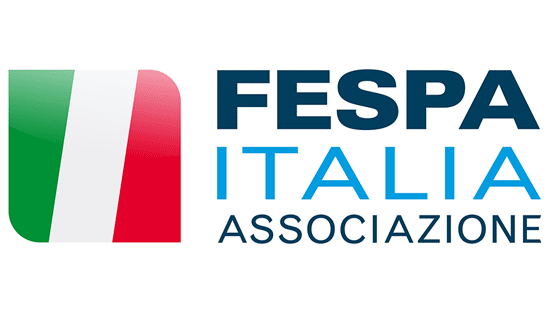How to dispose of waste cleanly

Build sustainable waste disposal into your workflow and boost your green credentials in the process.
Responsibility falls squarely on print service providers (PSPs) to dispose of their waste properly. Strict regulations can mean harsh fines and even prison sentences so getting it right is essential.
Ink disposal represents a significant challenge to the screen print industry, simply because of the dangers associated with them
Paper is one of the easiest – and most renewable – waste streams to deal with. It’s taken to a recycling facility, washed, pulped and remade into new paper in a range of qualities. Paper recycling technology has even advanced to a point where the careful sorting and separation of paper and card according to grades is no longer necessary.
But for the screen print industry, the most problematic material is chemicals – more specifically, hazardous chemicals. “Ink disposal represents a significant challenge to the screen print industry, simply because of the dangers associated with them,” says John Haines, general manager of recycling company J&G Environmental. “There are very, very few hazardous landfill sites in the UK, which makes disposal of these materials more complex and quite a lot more expensive.
Indeed, the EU has implemented a range of rigorous controls on printers’ chemicals. Most phthalates used in the manufacture of plastisol inks for t-shirts have been banned, for example, while the number of biocides allowed in water-based inks have been severely restricted.
And the hazardous chemicals that remain on the market are billed as hazardous for a reason. UV and PVC inks are highly toxic, while plasticisers have been linked to endocrine disruption. Resins and monomers can cause skin irritation, and solvents are harmful to the environment, leaching into the ground and waterways to harm wildlife and aquatic ecosystems. All have a degree of flammability which can cause fires in studios and, if not disposed of properly, natural environments.
What a waste
There have been some advances with hazardous ink disposal – progress in ink recovery, for example, or biological treatments that turn solvents into an inert sludge that can be safely returned to water courses – but generally speaking, once this hazardous material is collected by a waste contractor, it’ll undergo a solidification treatment using lime or fly ash, turning it into a ‘cake’ that’s either used in energy-from-waste facilities, or buried (safely) in landfill.
In a bid to control costs and remain competitive, ink manufacturers can continue to use harmful chemicals, and printers don't always consider the implications of buying cheaper or hazardous products
Some industry experts believe that more could be done to reduce the inclusion of hazardous chemicals in printers’ inks, especially when waster-based inks remain such a viable alternative. Dr Scott Watkins, chief marketing officer at KISCO, says that dyes and textiles have seen enforced limitations on hazardous materials, but the ink industry is slow to catch up. “There are accreditation and audit systems in place for the companies that produce dyes, but not for those that produce inks,” he says. This means that in a bid to control costs and remain competitive, ink manufacturers can continue to use harmful chemicals, and printers don't always consider the implications of buying cheaper or hazardous products.
Green credentials
But, as the FESPA 2018 print census shows, environmental credentials are becoming increasingly important to customers. Some 76% of those surveyed say that customer demand for environmentally responsible products is shaping business strategy, with more than one in five stating that it is a major influence.Around a third of respondents say they’ve taken steps to satisfy this demand, with a common measure being the adoption of VOC-free inks. Indeed, there are a variety of ‘eco-friendly’ inks on the market – water-based being the most common – but Dr Watkins doesn’t believe that many of these options, such as vegetable-based inks, provide an adequate alternative to the synthetic inks already in use. “Customers and brands are very focused on colour intensity and fastness. In general, vegetable-based inks give less intense colours and are less stable than wholly synthetic dyes, so it's a false economy if you use a vegetable ink to save resources but create products that end up needing to be replaced more often as they’ve faded.”
Furthermore, there’s a limit to the amount of renewable materials that can be used in printing inks – only a few elements of organic pigments, which make up a significant proportion of any printing ink, can be produced from renewable sources, and can therefore be disposed of sustainably.
“I think the printing industry, and indeed the screen printing sector, does the best it can when it comes to the environment,” says J&G’s John Haines. “But there are problematic products that they simply have no choice to use if they want to fulfil their customers’ needs. It’s tricky.”
So what can a screen printer do to manage their waste as effectively as possible? “As a general rule, you should try to prevent waste first, then reduce, then reuse, then recycle,” says environmental consultant Clare Taylor. “Then it’s energy recovery and then, finally, only disposing of materials that can’t be used elsewhere.”
Avoiding the waste cowboys
For most print services, this means enlisting the help of a good waste contractor, particularly one with experience of the industry. “The right waste disposal company will advise you on the best ways to manage your waste, and make sure everything that can be recovered is recovered. That includes hazardous material, electronic equipment and machinery, as well as more common substrates such as paper and glass,” says Alistair Hilditch-Brown, managing director of waste consultancy group Broad Environmental.He adds that, given the rising costs associated with landfill, it makes financial sense for PSPs to invest in a waste service that will get them the most value for money – and not just that, to invest in a reputable company that won’t land the business in hot water at a later date. “Even when a waste contractor has taken your waste away, you still have a duty of care to uphold,” he explains. “If they end up illegally dumping your waste somewhere and it’s traced back to you – which it’s very easy to do – then you’ll be liable for its proper disposal, even if you’ve already paid for it.”
While Hilditch-Brown agrees that there are “waste cowboys” in the market touting their services, he says that finding a decent contractor is straightforward. “Check that they’re accredited, and that they have a waste carrier’s license,” he says. “Ask for testimonials, and to visit their premises. A reputable waste contractor will be happy to show you around. You can also check in with the local environment agency. It’s important that you do your due diligence; you’re protecting your business from potential fines and legal action, as well as demonstrating to your customers that you’re mindful of the environment, which is increasingly important in a competitive market.”
Widen your knowledge
The waste management sector is enormous, and there’s a lot for any business to consider. But as well as guidance from waste contractors, there is training available to help broaden your understanding. The Chartered Institution of Wastes Management offers a range of courses, from basic to advanced, while the BPIF runs a range of development and knowledge programmes. FESPA’s comprehensive Planet Friendly Guide (available to FESPA Direct members) also provides a wealth of practical, technical information and advice, all designed to help screen printers maximise their businesses while minimising their impact on the environment.Less mess: Five ways to reduce your hazardous waste
Reuse returned inks
Solvent and water-based returned inks can be reused if they’re not diluted too much or contaminated with cleaning agents. Avoid contamination of unused ink by returning residual ink on screens to their containers before the machine is cleaned.
Use an automated mixing system
Computerised Pantone matching systems or programmable scales allow for precise volumes of ink with no colour correction required. These systems also reduce solvent loss when compared with manual mixing, and require less cleaning agent.
Use reusable cleaning wipes
Once dirty, reusable cleaning wipes can be returned to the rental company, washed and put back into circulation. The contaminated solvent is distilled and the sludge subsequently incinerated, but reusable wipes often contain less cleaning agent than their disposable counterparts.
Recover solvents
Special purpose distillation equipment can be used to recover even small volumes of solvent, which can then be reused. The same principle can be applied to solvents with high flashpoints (and therefore high boiling points), where vacuum distillation can be used.
Choose supplies in reusable containers
Some inks and varnishes are supplied in reusable containers. Using these with liners that are unreactive to the contents will prevent entire drums being classed as hazardous and subsequently incinerated.
Become a FESPA member to continue reading
To read more and access exclusive content on the Club FESPA portal, please contact your Local Association. If you are not a current member, please enquire here. If there is no FESPA Association in your country, you can join FESPA Direct. Once you become a FESPA member, you can gain access to the Club FESPA Portal.
Topics
Recent news

How AI can benefit your data collection
Printers are collecting data about everything from costs to customers and inventory. But how can AI help you to make the most of that?

No minimum order: the growth of DTF decoration
Andy Rogers at Stahls’ UK and Europe, garment decoration firm based in Braintree, UK and Dillingen, Germany, on the cost and speed benefits of direct to film (DTF) printing.

The design democracy: AI, creativity and interior décor
We spoke to Matt Fletcher of John Mark Ltd and Cheryl O’Meara from the Print Pattern Archive about combining age-old techniques with artificial intelligence (AI) to create exciting new motifs for luxury wall coverings.
